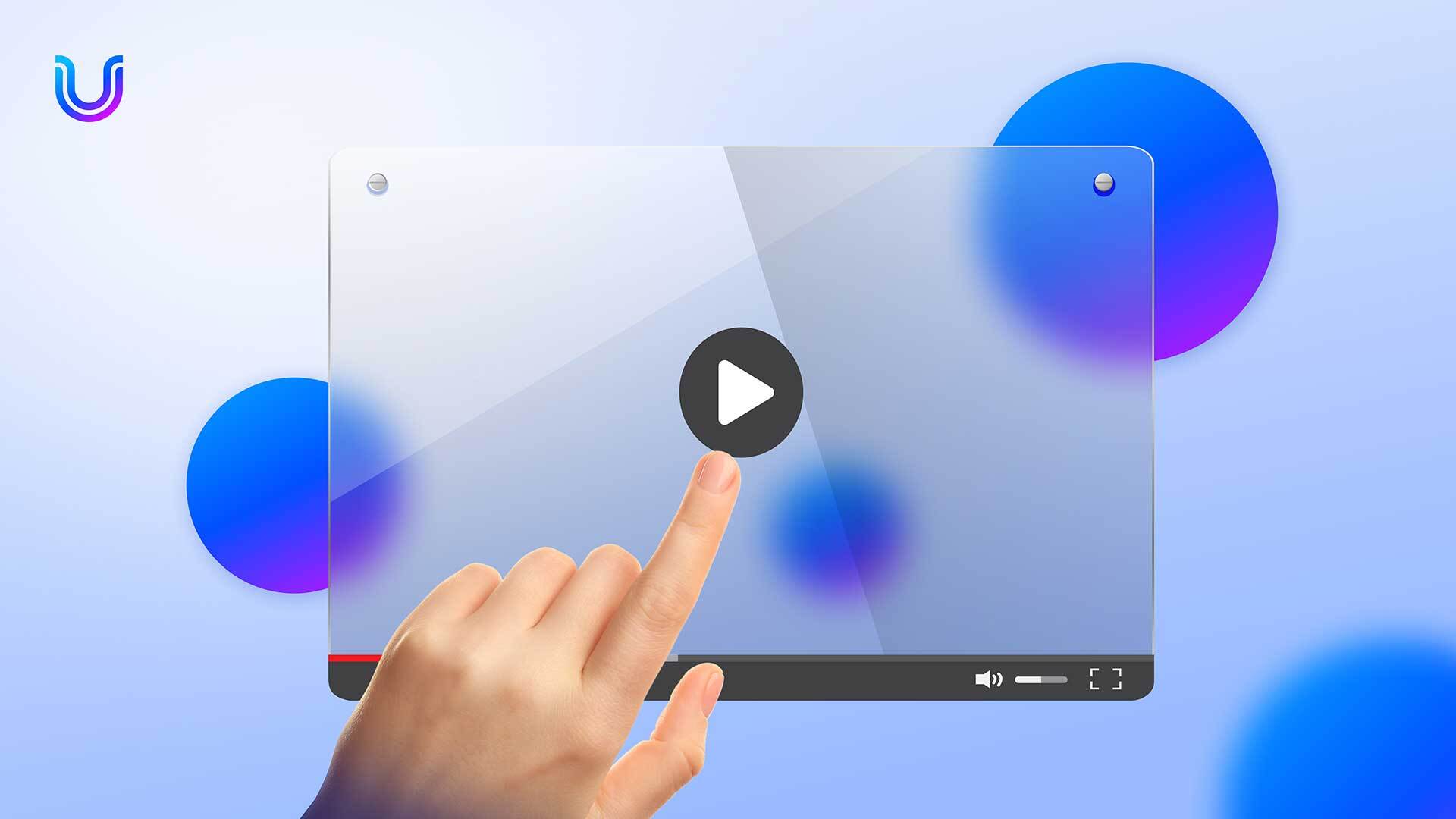Press Play For Accessible Videos – Your 10 Tip Guide

Video content blends visuals, sound, and story that can often resonate and connect with viewers in ways that other types of content cannot easily achieve. With precise editing, captivating soundtracks, and narratives that deeply engage videos can create a powerful sense of belonging, making us feel like we’re part of a larger story. However, despite the immersive nature of these experiences, they only resonate with a fraction of the population, due to the fact that many videos are not accessible.
Accessibility is a big area that many video creators are overlooking. Making your video content accessible can seriously alienate many of your viewers and negatively impact audience engagement.
Getting video accessibility right by incorporating distinct features, functions and considerations can massively boost your viewership and engagement.
In this piece, we’ll explain exactly what you need to know – from accessibility laws, guidelines and 10 tips on how to get as many eyes on your video content as possible.
Why should you care about video accessibility?
Statista’s numbers are in, and they’re pretty wild: over three billion folks globally were diving into streaming or downloading videos at least once a month in 2022. In the U.S. alone, the live video scene was buzzing with about 161.4 million viewers in 2023. And the numbers are only set to grow.
Problem is, the World Health Organization tells us that 5% of the world’s population (that’s 430 million people) are dealing with serious hearing loss. On top of this, at least 2.2 billion people have a vision impairment. And these stats are just scratching the surface.
From color blindness to dyslexia, there’s a whole spectrum of reasons someone are very likely to struggle to engage with your video content.
So what exactly is an accessible video?
“Accessible videos” means every viewer can engage with your content, regardless of disabilities. It’s about leveling the playing field, so that people with disabilities can enjoy and engage with video content in a way that’s on par with people without disabilities. In other words, accessible content is your ticket to making sure no one misses out on your digital creations.
Let’s explore some frequently asked questions that video creators must consider to make sure their content is as welcoming and inclusive to as broad an audience as possible.
What are video accessibility standards?
The World Wide Web Consortium (W3C) developed the Web Content Accessibility Guidelines (WCAG) with a mission: make the web a place where anyone and everyone, regardless of disabilities are included.
WCAG is your gold standard for building a more inclusive digital world. Video creators are well placed to make this their guidebook when making their videos accessible.
So let’s break down the basics of WCAG. There are three main WCAG levels you should know about to keep things inclusive:
Level A: This can be seen as the ‘starter pack’ of accessibility. It knocks down the basic barriers, like adding alt text to images so screen readers can tell visually impaired users what your video contains.
Level AA: This is the next level up, covering more ground. It includes everything in A, plus extras like audio descriptions for videos, helping people who are unable to see the action follow along.
Level AAA: This is currently the ultimate destination in web accessibility, setting the highest standard. It’s A and AA, with even more criteria, like text transcripts and sign language for media, making sure content is accessible for a wide range of people with disabilities.
So, what can you do to make sure your video content plays by the WCAG standards?
Start by including alternative text for your audio-video files, roll out captions for your videos, flip your documents into PDFs that talk back with audio playback, and don’t forget to drop transcripts for any audiovisual content.
But be aware, WCAG is not the only guideline on digital accessibility. We’ll now highlight the relevance of web accessibility laws such as the Americans with Disabilities Act (ADA) and Section 508. Let’s find out more.
What makes a video compliant with the ADA?
The ADA lays down the law, mandating that everything digital – including your videos – needs to be accessible to folks with disabilities.
In fact, ADA compliance for video content aligns very closely with the WCAG. We’ll provide you with a thorough checklist in this piece but, in short, to create ADA-compliant videos, they should include features such as closed captions, audio descriptions, accessible media players, and text transcripts.
Both accessibility standards emphasize the need for content to be perceivable, operable, understandable, and robust, making them complementary in their aim to improve digital accessibility for individuals with disabilities.
By aligning your content with both WCAG guidelines and ADA rules, you’re also giving a real boost to your audience numbers, while actively building a digital world that welcomes every viewer.
How do I meet Section 508 compliance for my videos?
Similar to the ADA, Section 508 compliance for videos also focuses on making your content inclusive and accessible for everyone. The difference is that Section 508, a key piece of the Rehabilitation Act of 1973, mandates that all tech and electronic info from federal agencies and their contractors be fully accessible to people with disabilities.
Although Section 508 specifically applies to federal institutions, adhering to Section 508 standards is considered a best practice for all organizations to enhance accessibility.
Furthermore, Section 508 has integrated WCAG as the federal standard for website and application accessibility, reinforcing its commitment to universal access.
What is an example of an accessible video?
Want a more tangible understanding of what makes a video accessible?
Here’s an example: you’re shooting a cooking tutorial on YouTube, a masterclass in inclusivity, designed to invite viewers of all abilities into the culinary world you’ve created.
From the get-go, closed captions move across the screen, capturing every word and sound, so people with hearing challenges don’t miss out on anything.
During any silence or pauses, an audio description explains what’s happening on screen, so folks with visual impairments can also picture what the chef is doing, the mix of ingredients being used and the plates of food cooked up.
The video pops with high-contrast visuals, so everyone can see the action unfold, while keyboard-friendly controls make navigating the content a breeze for people with mobility considerations.
There is also a little window in the coroner of the screen where a sign language interpreter brings the spoken word to life, so no one’s left out of the conversation.
Following these tips, you’ve just made a cooking tutorial video that serves just about everyone. And this is the goal of building accessibility into videos.
Are embedded videos accessible?
Embedded videos can meet accessibility standards, however it does require some finesse.
When you embed a video into your website, they should also include closed captions for the deaf and hard of hearing, audio descriptions for the blind and visually impaired, and be compatible with keyboard navigation and screen readers. The video player itself must also support these features. More on these features below!
Making embedded videos accessible requires intentional effort in the design and development process to include these elements. When properly implemented, embedded videos can be a valuable part of an inclusive digital environment, accessible to users with a wide range of disabilities.
In summary, while embedded videos have the potential to be fully accessible, their inclusivity depends on the implementation of accessibility features.
What are guidelines for making a video accessible?
If you’re starting out in video creation or are keen to make your existing videos accessible, here are 10 top tips:
1. Closed captions are key: Essential for helping viewers who are deaf or hard of hearing can fully engage with your content. Captions should accurately reflect spoken words and significant sound effects.
2. Don’t skip on audio descriptions: Offer detailed verbal descriptions of key visual elements, enhancing accessibility for viewers with visual impairments. This approach helps in creating a vivid auditory picture of the on-screen action.
3. Mic up for clear sound: Use a high-quality microphone and minimize background noise to guarantee that all viewers can enjoy your content with clarity.
4. Keep it simple: Aim for straightforward communication so that your content is comprehensible without requiring specialized knowledge or frequent consultations with a dictionary.
5. Use keyboard shortcuts: Adapt your video player for users with mobility impairments, ensuring they can navigate your content using keyboard shortcuts alone.
6. Transcripts are transformative: Providing a text version of your video’s audio track can significantly improve accessibility, catering to those who prefer reading or are unable to listen.
7. Pick the right video player: Choose a video player that supports essential accessibility features, including closed captions, audio descriptions, and keyboard navigability.
8. Colors and visuals matter: Go for high-contrast visuals and design elements that do not rely solely on color differentiation, making your content accessible to viewers with color vision deficiencies.
9. Use sign language: Where possible, include sign language interpretation to accommodate viewers who rely on sign language for communication.
10. Test drive your content: Before hitting publish, get input from individuals with disabilities to identify (and rectify) any potential accessibility issues, so your content is as inclusive as possible.
By following these steps, you can create videos that everyone can enjoy, no matter what their disabilities may be.
Where can I learn more about video accessibility standards?
For deeper insights and guidelines on video accessibility standards, the World Wide Web Consortium (W3C) Web Accessibility Initiative (WAI) is your go-to and an invaluable resource for digital content creators.
Visit their website to explore detailed information on making digital content accessible for all users, including those with disabilities.
UserWay: making your videos inclusive and accessible
UserWay makes sure your videos play by the rules with major accessibility standards like the ADA, Section 508 and the latest update to the WCAG.
With an all-in approach, UserWay helps you break down barriers, making your digital content welcoming to everyone, including users with disabilities.
Whether it’s videos or webpages, UserWay’s got you covered, helping you stay compliant with key accessibility regulations such as the ADA, Section 508, and the most recent updates to the WCAG.
Want to see our most popular accessibility tool in action? Book a demo with us today.
FAQS
Why should I make my videos accessible?
Making your videos accessible means that people with disabilities, like those who are deaf or have low vision, can enjoy your content too. Plus, it’s not just a nice thing to do; in many cases, it’s required by law to make sure digital content is accessible to all.
Are captions and subtitles really that important?
Captions and subtitles are extremely important as they let your viewers who are deaf or hard of hearing know exactly what’s being said and what’s happening in your video. They’re also helpful for people watching in noisy environments or who are not native speakers of the video’s language.
Audio descriptions sound complicated. Do I really need them?
Audio descriptions are vital for making your videos fully accessible to blind or low vision audiences, so that no one misses out on the visuals of your content.




Share